I acquired a couple of pretty little Continental pistols at various auctions – one was more than twice the price of the other, but I can’t see that much difference, perhaps I should be able to after further study! I’ll put up some photos as I decide what needs doing to them.
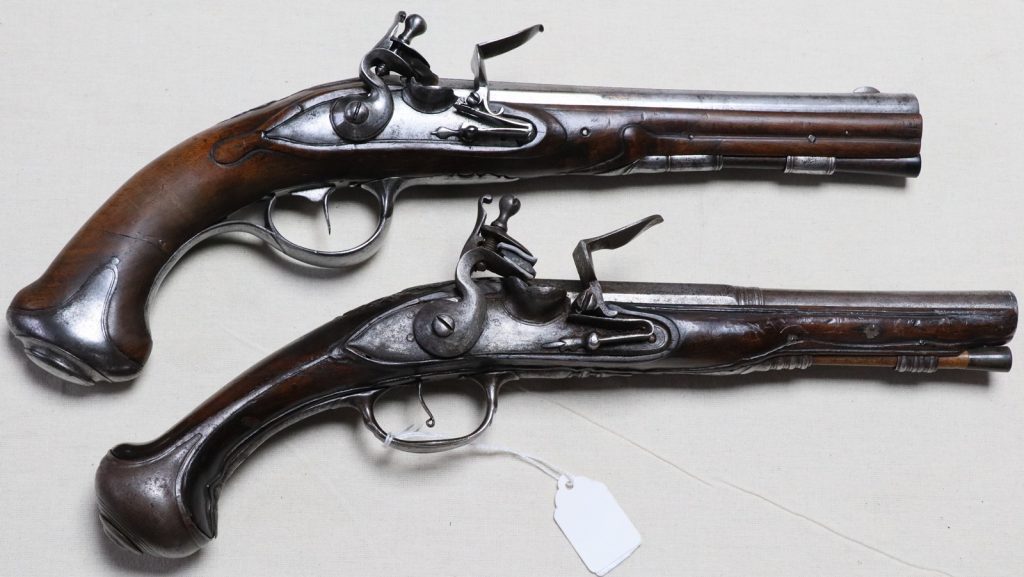
The top pistol is signed I.A.Kuchenreuter on the barrel and has a {brass) poinson of a horse and rider. The Kuchenreuter family of gunmakers operated a large workshop in Regensburg (Germany) throughout the 18th century. This signature is possibly of Johann Andreas (1716-1795) or the younger Johann Andreas II (1758-1808), most probably of the former. It has several characteristics of Kuchenreuter pistols – the horseman poinson, the flattened butt, and the ears of the butt cap not extending up the butt as most did. It is a little unusual in having the barrel as a polygon bore of 7 sides but with no twist I can see. It’s a pretty little pistol and would have been light and handy to shoot. The butt has been cracked through and repaired – probably since the invention of effective adhesives. It is pretty clean and unrusted – I guess it has not been the subject of extensive restoration. Guessing a date is difficult without a feeling for German pistols – if it were English I’d use the curled back tip of the trigger and the lack of an outside support for the frizzen pivot and a basic (but sound) lock mechanism to put it somewhere in the second or third quarter of the 18th century – which would fit with the first Johann – I guess probably around 1740 – 1770 – but its German so I’m not confident of those dates! I am inclined to leave this pistol as it is — the repair of the butt is acceptable, and although its conspicuous, I doubt it can be truly hidden and attempts to undo it may well make it more difficult to join up in an invisible way. The rest of the pistol is OK, its authentic and doesn’t look messed about, which is the first criterion for restoration when something is in a reasonably acceptable condition, So no action required except perhaps a gently rub over with a cloth and some linseed oil! I might just clean out the bore as it looks pretty good and it would be nice to check if it has any twist in the polygonal ‘rifling’ – a bit like the Whitworth rifling!
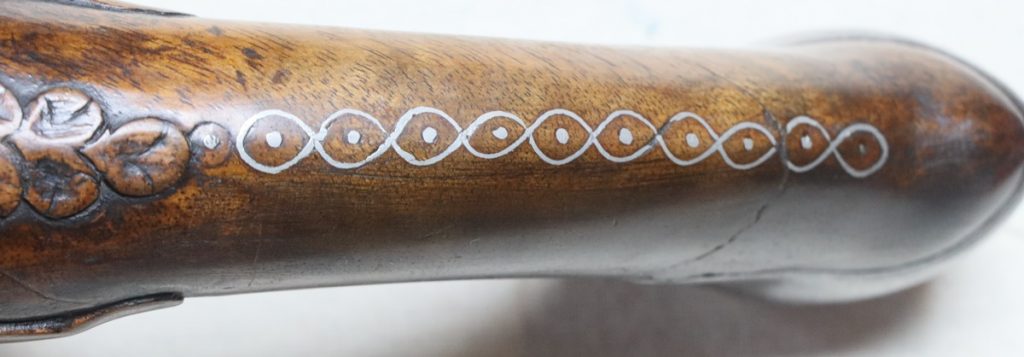

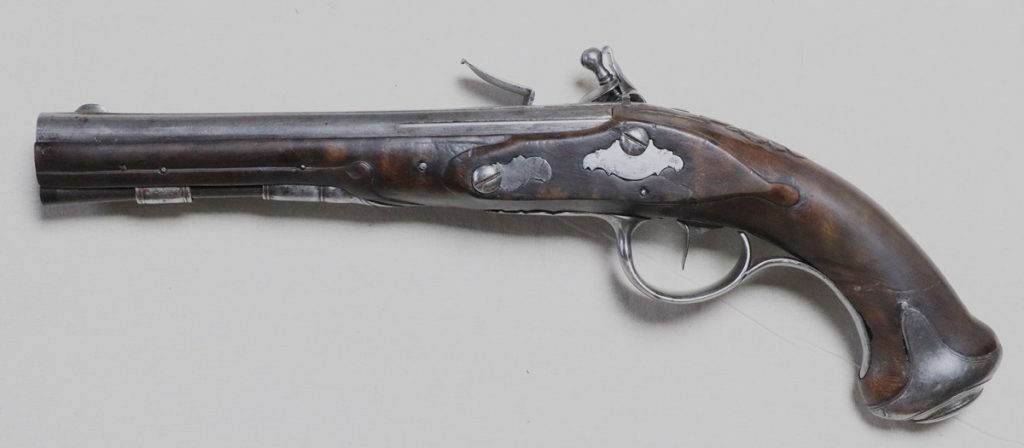
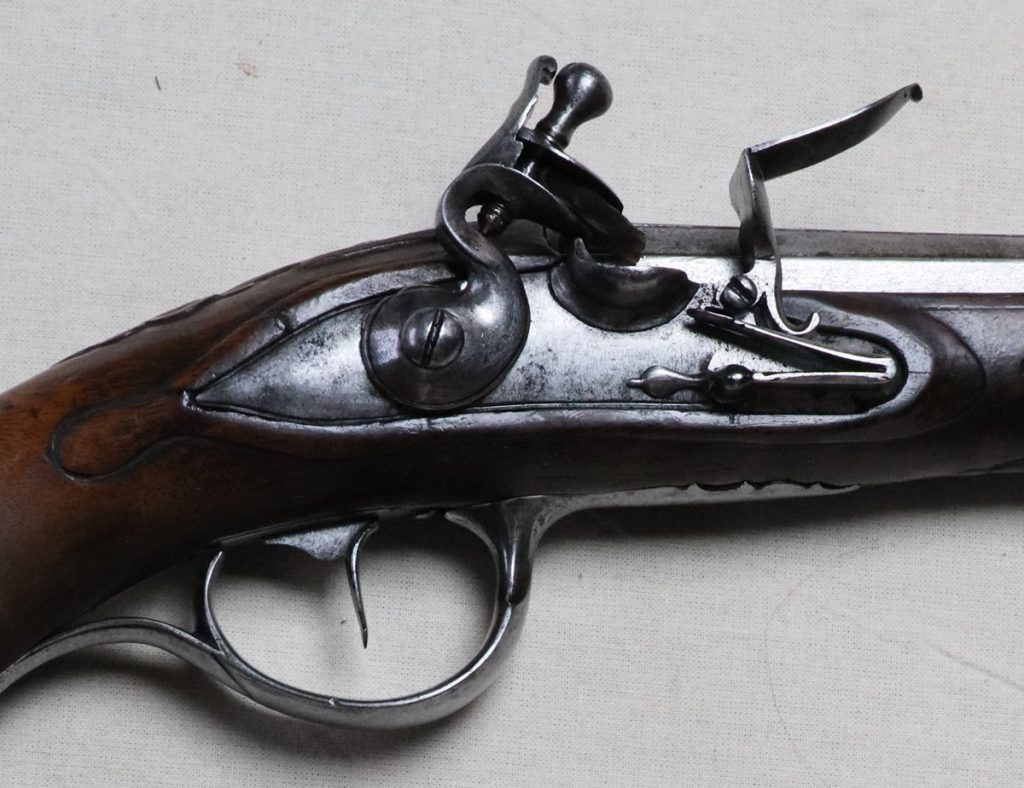
Here is the Pistoia pistol;-
Pistoia is a town in Italy, NW of Florence, and supported a number of gunmakers and especially barrel makers – its reputation was at times equal to that of Brescia. The barrel makers of Pistoia used a gold stamp with crown above the word Pistoia as a mark – this pistol has a lion stamp below the Pistoia stamp which is presumably the mark of the individual maker. The barrel is inlaid with somewhat primitive inlaid silver patterns at breech and muzzle and at the step from octagonal to round – the lock is plain, although it may have had some light engraving at one point. The side plate shows signs of engraving on its tail, but the main part seems devoid of anything, although its a bit pitted. The surface of the lock and cock is a bit rough but not badly rusted – looks a bit like a crude attempt to clean it. The cock may or may not be original – its not a very elegant shape. There is no outer support for the frizzen pivot, and the lockwork inside is pretty primitive – there is no bridle, and the finish is much cruder than the Kuchenreuter above. It is possible that the outer finish was never particularly good! One might be tempted to think that the barrel was from good Pistoia makers but the pistol was made by a distinctly second rate gunsmith, quite likely not in Italy – maybe Liege or France? In terms of date I’d put it as a contemporary of the Pistol above. Unlike the pistol above, this one will benefit from a little attention. There is some rust around the frizzen spring so the lock will need to be stripped. The lock plate and cock look very dull and would benefit from having a bit of sympathetic surface finishing to match the rest of the furniture. The inlay on the barrel was almost completely hidden, but it just needed a little rubbing with solvent and tissue or very very worn 2000 grit paper to reveal it – there is a little way to go there. The woodwork is in keeping with the rest of the pistol – there is a chunk by the trigger that has been glued back on rather badly – I’ll have a look to see if that can be done better. A bit of work will have this looking pretty – thanks mostly to the Pistoia barrel!

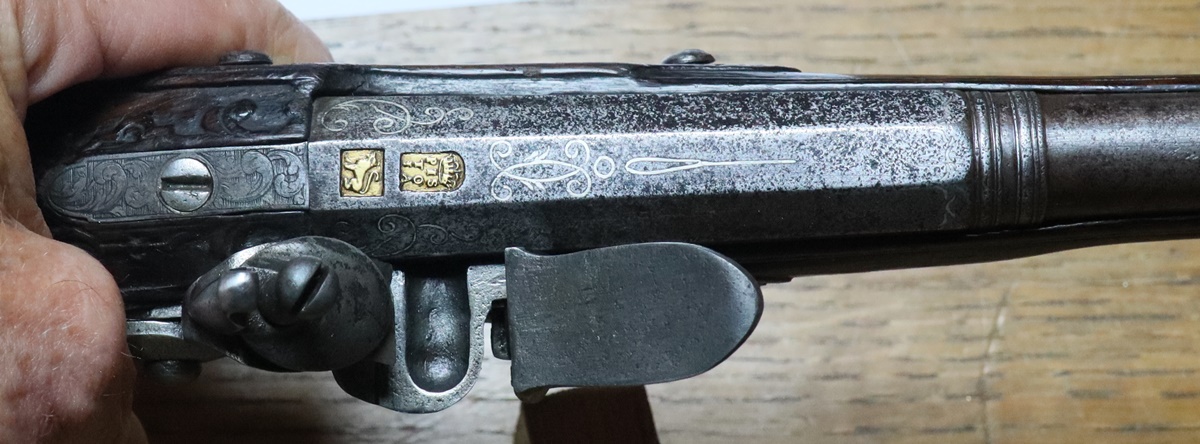
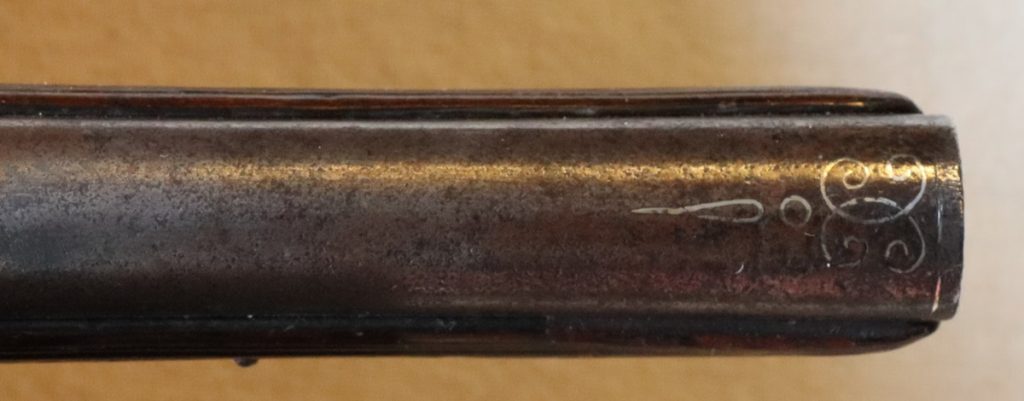
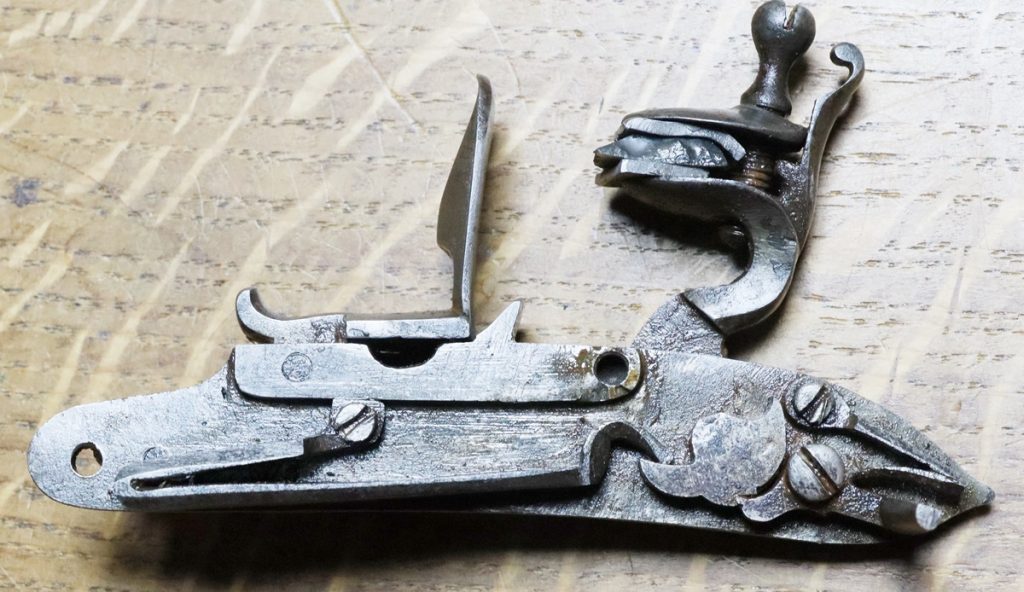
The lock of the Pistoia pistol was clearly badly corroded and has been cleaned off, but without stripping it. The surface is quite eroded and there is still a lot of rust where the wire brush didn’t reach. I have loosened most of the screws, and I’ll pop it in the electrolytic de-ruster for a few minutes and then take it to pieces. I have got a bit careful with the deruster after sending a sample of broken steel to be metallurgically examined – I am confident that the process doesn’t do any harm to sound metal, but I’ve has a couple of parts fall apart after de-rusting that had a lot of pre-existing internal faults and cracks and a high silicon and carbon content. It seems that its the internal cracks that are the problem – the nascent hydrogen released on the surface of the rusted item seems eventually to disrupt the cracks and cause them to propagate and break the part. I think its probably to do with the hydrogen affecting the growth point of the crack – that is a high stress point anyway. I’ll clean up the surfaces, but the lock face and the cock surface are diamond hard and I’d have to anneal them to be able to file them – I’m not sure its really necessary – I’ll stick to cleaning at the moment and see what a fine wire brush can do for them